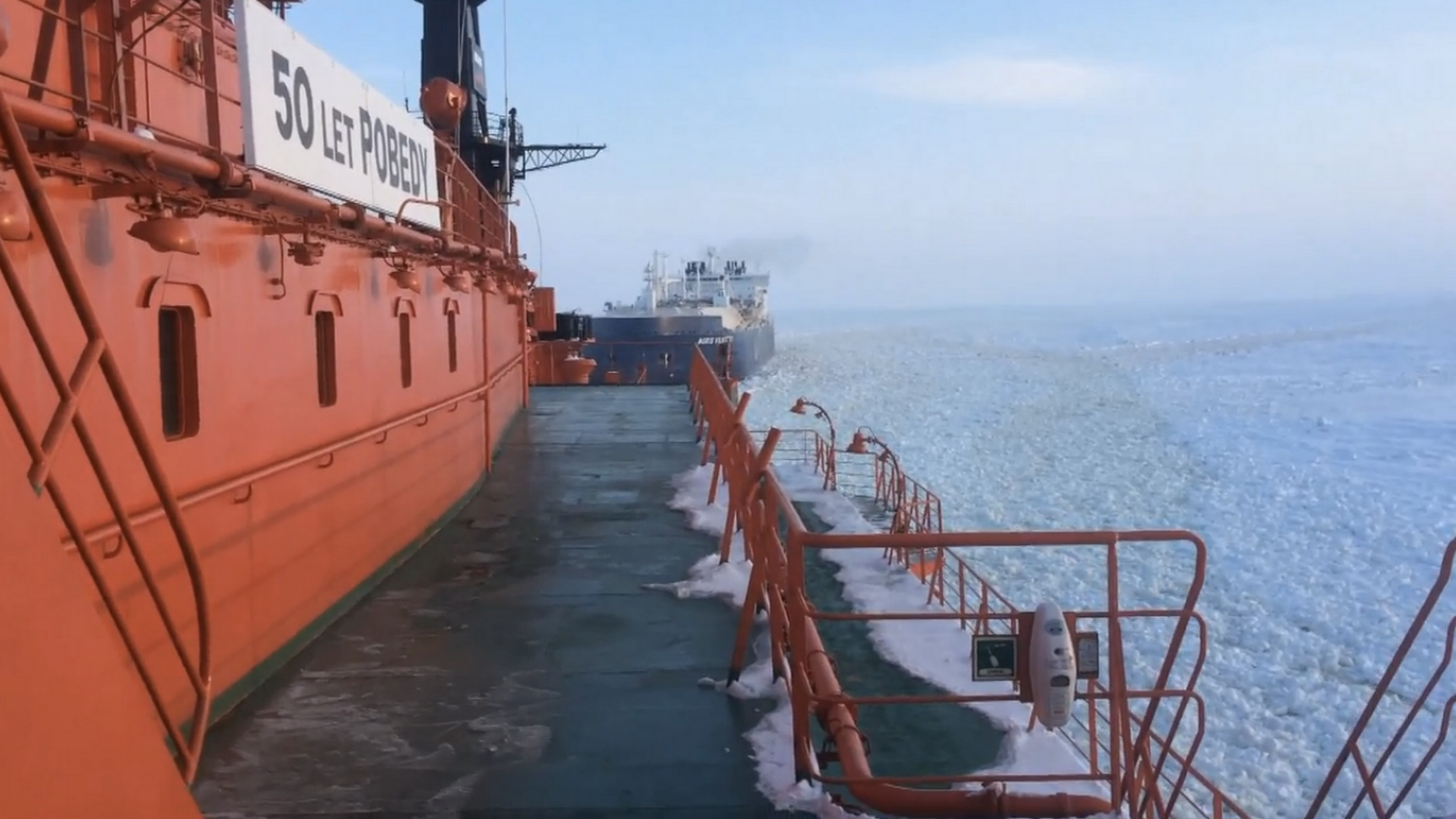How a shipping safety violation is escalating an internal conflict over Russia’s Northern Sea Route
So far, the Kremlin has sided with icebreaker operator Rosatomflot, prioritizing commercial considerations in the dispute.

A serious violation of Arctic shipping safety rules by Yamal LNG carrier Boris Vilkitsky last month has escalated a growing conflict about the regulation of and control over the Northern Sea Route.
The widening rift involves Rosatomflot, operator of Russia’s icebreaker fleet, on one side and the Ministry of Transportation’s Northern Sea Route Administration, on the other side. While the former aims to prioritize commercial considerations, the latter wishes to uphold existing safety standards along the route.
Following the safety violation, the Boris Vilkitsky was detained in the Port of Sabetta for more than a week and was only permitted to leave after direct intervention by the Kremlin. The dispute between the agencies has affected the smooth operation of Russia’s largest Arctic natural resource project prompting a harsh rebuke by President Putin directed at Northern Sea Route Administration officials.
“Gas carriers are not allowed into the port under far-fetched pretexts, then they do not let them depart. This will be dealt with separately,” President Putin stated during a meeting with members of the Council of Legislators.
NSRA versus Rosatomflot
The struggle for control over the NSR has been simmering below the surface for at least the past two years since the Russian government put forth various plans to reorganize the route’s competencies.
Currently, the NSRA manages the growing traffic on the route and its primary functions are related to its safe operation, including issuing of permits to commercial vessels. Rosatomflot, a government-owned corporation, operates the country’s fleet of nuclear icebreakers and benefits financially from escorting vessels through the waters of the NSR.
Under the proposed structure responsibilities for the route would be consolidated either under the umbrella of Rosatomflot or the Ministry of Transport, with the former currently favored by the Russian government.
“This looks like a very hard battle between different agencies and personalities. Large sums of money in the form of state investments and subsidies are involved,” explains Arild Moe Senior Research Fellow at the Fridtjof Nansen Institute.
Boris Vilkitsky escalates existing conflict
The conflict between the two agencies escalated last month when the LNG carrier Boris Vilkitsky, operated by Dynagas LNG Partners, entered the NSR despite damage to one of its three engines. The malfunction reduced the vessel’s ice capabilities from Arc7 to Arc4 and made it illegal for the vessel to enter the route.
The flaw was known to the vessel’s captain, Dynagas LNG Partners, and Rosatomflot before it entered the route, but was concealed from NSRA officials and the port authorities in Sabetta. Officials called the incident a gross violation of NSRA rules and “a threat to the safety of navigation, as well as the protection of the marine environment.”
NSRA officials only became aware of the damage when the vessel experienced difficulties navigating in heavy ice en route to Sabetta while being escorted by the Rosatomflot icebreaker Taimyr. Following the arrival of the vessel in Sabetta officials uncovered a host of additional violations, including the absence of accurate ice charts and the lack of required ice navigation experience by the captain and crew. Dynagas LNG Partners did not respond to requests for comment on its apparent lack of safety culture.
The Boris Vilkitsky remained in port for more than a week before it was permitted to leave upon intervention by the Kremlin. Even under escort by Russia’s most powerful nuclear icebreaker 50 Years of Victory it took almost a week to get the vessel out of the ice-covered waters of the NSR.